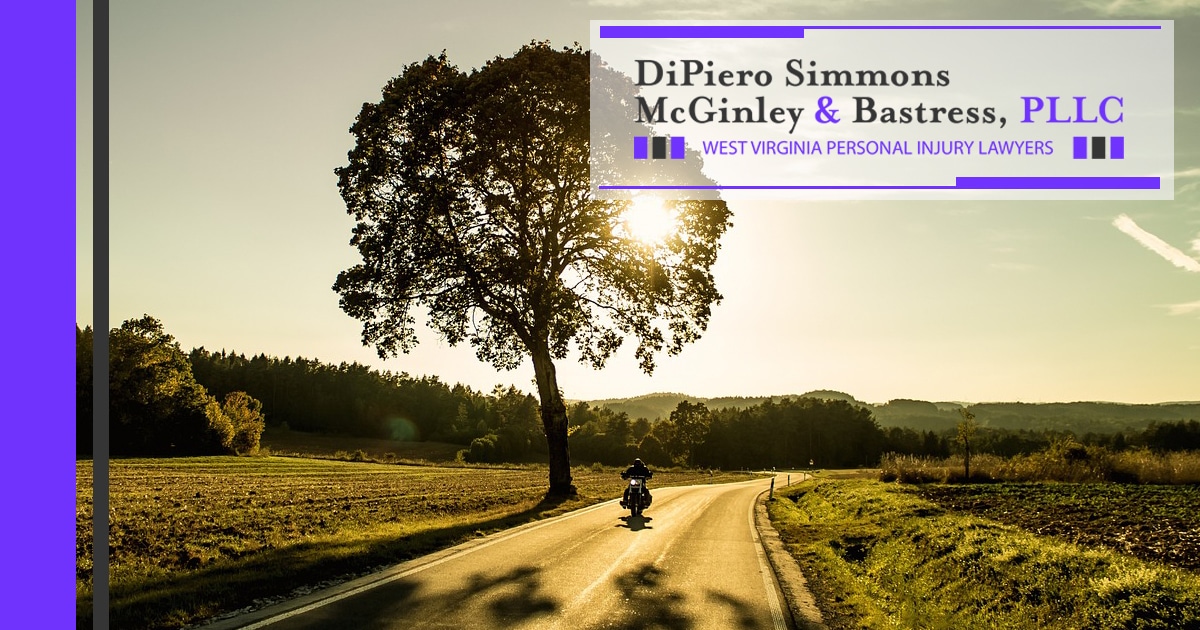
There’s a certain sense of freedom and “owning the road” when you’re on a motorcycle. With the wind in your face and the speed and power just at your fingertips, it can be exhilarating and a lot of fun.
However, alongside the benefits of having a bike as your mode of transportation, there are some drawbacks. According to research from the Insurance Institute of Highway Safety (IIHS), there were 54,165 on-road registered motorcycles in West Virginia in 2023. Despite many motorcycles being on the road at any given time, they are often overlooked and end up being struck by other vehicles, especially on high-traffic or congested roadways.
Motorcycle drivers may feel the need to cut between lanes of traffic, called lane splitting, and they often do this either to avoid possible collisions or to get to their destination faster.
However, the question remains: Is lane splitting legal in West Virginia?
In this post, we will examine the laws and dangers surrounding lane splitting and what can happen in a motorcycle accident involving lane splitting.
What Is Lane Splitting?
Lane splitting is considered controversial in the United States. It is the act of a motorcycle driving between two lanes of vehicles moving in the same direction and it often occurs when traffic is slow or congested.
One of the main reasons lane splitting is considered controversial is because there is such a small percentage of motorcycle drivers and owners in the United States compared to other countries around the world.
Places like Europe and Asia, where there are more motorcycles than other types of vehicles, have less strict laws regarding how motorcyclists can drive, and the practice of lane splitting has been in place for a long time.
Other Motorcycle Terms Regarding Lanes
Lane Filtering
Unlike lane splitting, lane filtering is when a motorcyclist drives between stopped cars, usually at an intersection, to get to the front of the line. This falls under the umbrella of lane splitting and is not allowed in our state.
Lane Sharing
Another motorcycle-specific term is lane sharing, which is when two motorcycles ride next to each other within a lane. Although no driving laws do not strictly prohibit it, it is discouraged due to the dangers that could arise from not having enough space within the lane to react to sudden traffic issues.
Is Lane Splitting in West Virginia Breaking the Law?
Yes. Lane splitting in WV is breaking the law.
While some may argue that there is no law in the Mountain State specifically worded to prohibit lane splitting, WV Code 17C-7-9 states that a vehicle shall be driven as nearly as practicable entirely within a single lane. Drivers of any vehicle who fail to safely stay within their lane may be given a citation, face misdemeanor charges, and be fined if convicted.
Therefore, lane splitting and lane filtering are both considered to be breaking the previously mentioned WV Code.
Dangers of Lane Splitting
The Motorcycle Operator Manual from the West Virginia Department of Motor Vehicles (WVDMV) discourages both lane splitting and lane filtering because it can leave a motorcyclist vulnerable to unexpected dangers. Some of those dangers include:
- A hand could come out of a window
- A car door could open
- A car could turn or switch lanes suddenly
Unfortunately, drivers of other vehicles often can’t see motorcycles until it is too late and may be startled, potentially causing more accidents.
Also, some drivers take it personally when motorcycles split lanes and may act recklessly or dangerously to prevent motorcycles from doing so and intentionally cause harm to the motorcyclist.
Benefits of Lane Splitting
A motorcycle lane splitting study released in May 2015 from the University of California at Berkley suggests that lane splitting can help keep motorcyclists safer and also help to clear traffic. By splitting lanes, motorcycles can move more quickly through heavy or stopped traffic, avoid rear-end collisions, and get off highways more quickly.
California is the only state where lane splitting is not illegal. There is no law stating that it has been legalized. However, it is no longer prohibited. The California Department of Motor Vehicles published general lane splitting guidelines. They encourage motorcyclists to drive defensively and only split lanes without speeding or traveling more than 15 miles per hour faster than other traffic around them.
Liability for Lane Splitting Accidents
So, what happens if you’re involved in a motorcycle accident after splitting lanes in West Virginia?
Due to lane splitting not being legal, the courts will likely hold you responsible for your crash.
West Virginia follows comparative negligence laws, which means that you may be eligible for compensation as long as you are less than 50% at fault for the accident. But if the accident occurred while you were lane splitting, the other driver could use the fact that you broke the law in their defense to increase your degree of fault to over 50% and bar you from receiving compensation.
However, our legal team at DiPiero Simmons McGinley & Bastress, PLLC, has experience with motorcycle laws and accidents in West Virginia, and we offer free consultations. Even if you are deemed partially at fault for your accident, having a qualified attorney on your side may minimize your degree of fault and allow you to receive some compensation.
The bottom line is that you shouldn’t lane split on a motorcycle in West Virginia, but if you have the misfortune of being involved in a motorcycle collision, there is legal help available to you.







